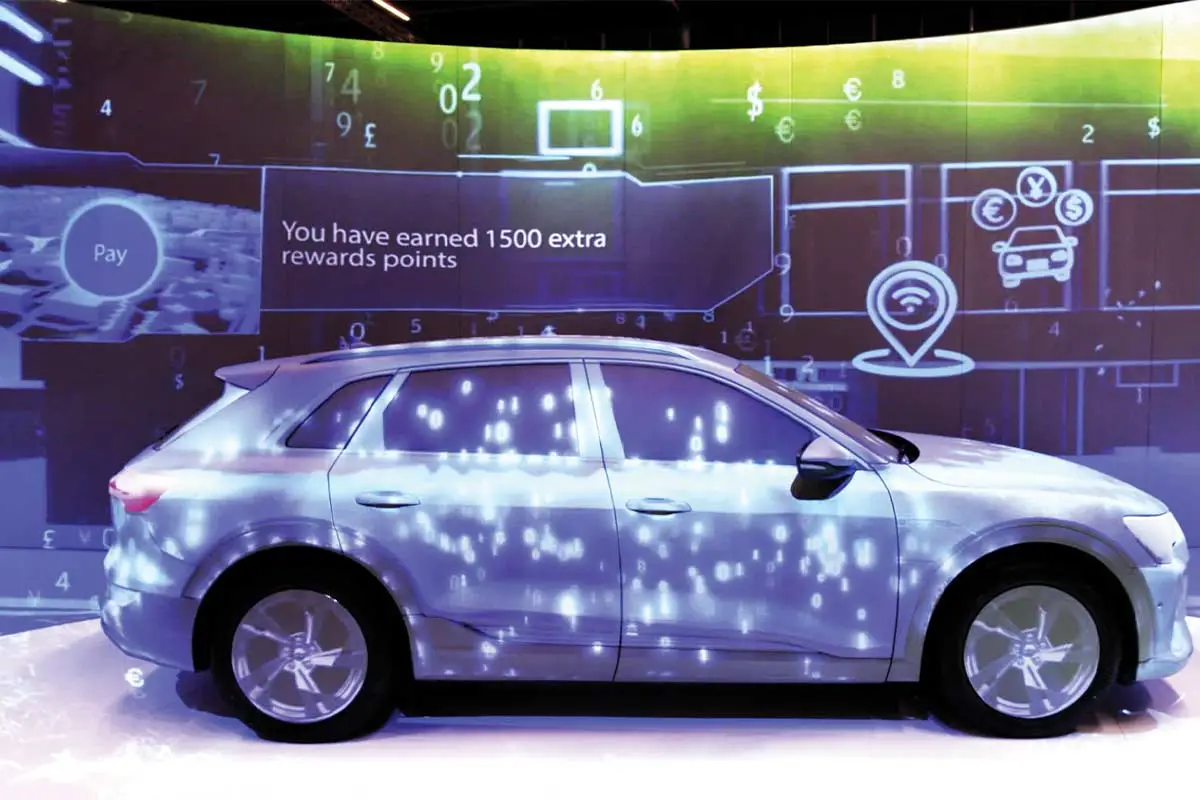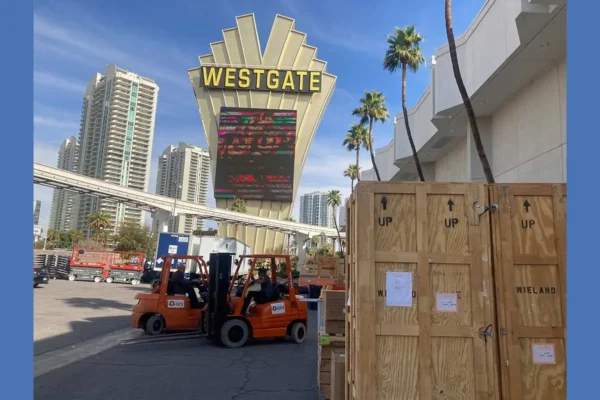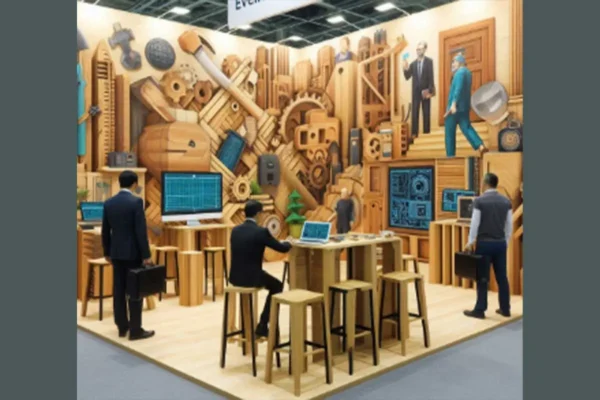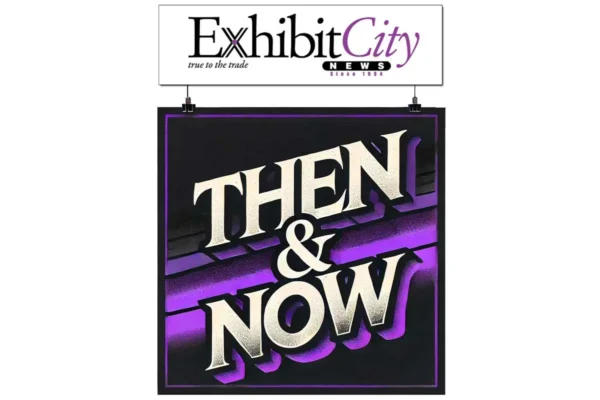Crafting Memorable Journeys in UX and Exhibits
by Chris Kappes, Exhibit City News
In the quest for defining good design, one need only glance at the iconic creations of our time: the iPhone, Google’s search engine, the Eames fiberglass armchair, Uber’s ride-sharing app, and the timeless appeal of Lego Building Blocks. These exemplify the fusion of form and function, where solutions not only meet but exceed user needs, ultimately translating into successful business endeavors.
Yet, what constitutes good exhibit design in today’s dynamic landscape?
Exhibition stands have undergone a remarkable metamorphosis over the past three decades. From static displays that once served as testaments to corporate prowess, they have evolved into interactive environments that mirror the shifting tides of cultural institutions, technological advancements, and evolving guest expectations. Amid this transformation, one truth remains unshaken: “Good design is good business.”*
The Rise of Experience Design
A global survey conducted by Momentum Worldwide reveals a seismic shift: 76 percent of consumers now prioritize experiences over products—a staggering 200 percent increase since 2012. What do these discerning consumers seek? Two words echo through the corridors of design: inspiration and meaning.
“The things we dream up must perform,” explains Scott Burns, senior vice president, creative at GPJ. “Everything starts with a thorough strategic brief before it goes into our creative team. Strategists create the brief. They form a perspective. It’s always identifying what is the point behind what we’re looking to create.”
Mark Sykes, Spiro senior vice president and executive creative director based in Sheffield, U.K., adds his thoughts, “Designing for experiences begins by understanding the gravity of where the customer needs assistance. This is captured as a strategic brief and is used to inform the creative team from around the globe.”
EXPERIENCE DESIGN IS EVOLUTIONARY
In the realm of experience design, the landscape has shifted dramatically. Immersive experiences have witnessed exponential growth, with technology playing an increasingly integral role in shaping user interactions. Burns asserts, “Experience design revolves around the user… [it] must consider technology, media, mobility, and AI to create positive emotions and drive specific behaviors.”
Sykes adds this perspective, “We’re no longer exhibition designers but ‘entertainment’ designers. We place key brand content and messaging within an architectural framework and embellish it with high-value digital, sensory, auditory production.”
However, designers today face a myriad of challenges. The cost of exhibiting has undergone a seismic shift over the past decade, with exhibit design and production costs now comprising a smaller percentage of the overall corporate tradeshow-event budget. The rise of affordable exhibit systems and portable displays, coupled with escalating costs in other areas, has necessitated a reevaluation of design approaches.
COVID-19 further compounded these challenges, emphasizing the importance of adaptability, resilience, and empathy in a rapidly changing world. Dave Lindermann, design partner at Core Design Group, observes, “Buyers are more concerned about the guest experience, creating memorable moments, rather than stunning architecture.”
Sykes concurs, “Exhibit architecture is getting simplified. It’s now designing a ‘house’ and vessel to draw the customer into the immersive story.”
But the challenge remains. Clients are expecting incredible experiences created in shorter periods of time.
TECHNOLOGY AS DESIGN ACCELERANT
To navigate these challenges, designers are increasingly leveraging technology as an accelerant for innovation. Global scale enables collaboration across offices, facilitating the sharing of resources and expertise. Sykes and Burns highlight being able to link up with other offices empowers their creative teams to respond to shortened timelines and ‘localize’ messaging, which is critically important to global clients.
While AI holds promise as a tool for streamlining the design process, its full potential has yet to be realized. Nonetheless, its applications—from mood and story board creation to image enhancement—offer glimpses into a future where technology serves as a catalyst for creativity.
EXPERIENTIAL ROADMAP
Both exhibit and UX design thrive when viewed holistically. It’s not about isolated brilliance; it’s about orchestration.
Here are some key tenets experiential designers follow:
- Visitor Personas: Understand your audience deeply. Who walks through the exhibit-event doors? What stories resonate with them? Craft experiences that speak to their souls.
- Storytelling Layers: Exhibits are narratives. Within the grand story, weave smaller tales—subplots that engage, surprise, and linger. Layer upon layer. Flow and focus.
- Design a linear journey. Guide visitors through crescendos and pauses. Use graphic and media design to orchestrate interest and flow.
- Interactive Learning: Gamify learning. Let touchscreens, augmented reality, and tactile elements invite exploration. Make learning an adventure.
- Embrace Technology: Infuse exhibits with tech magic. Interactive displays, virtual reality, and immersive soundscapes elevate the experience.
THE FUTURE OF EXPERIENCE DESIGN
The future of experiential design lies in the seamless integration of form, function, and experience. By embracing strategic thinking, empathy, and technological innovation, designers create immersive experiences that resonate deeply with audiences, transcending the boundaries of physical space and leaving an indelible imprint that create brand enthusiasts. The future of experience design is bright.
*T.J.Watson, son of IBM Thomas Watson, shared this in a company-wide memo in 1966.
This story originally appeared in the Q2 2024 issue of Exhibit City News, p. 66. For original layout or to read the full story, visit https://issuu.com/exhibitcitynews/docs/ecn_q1_2024.































